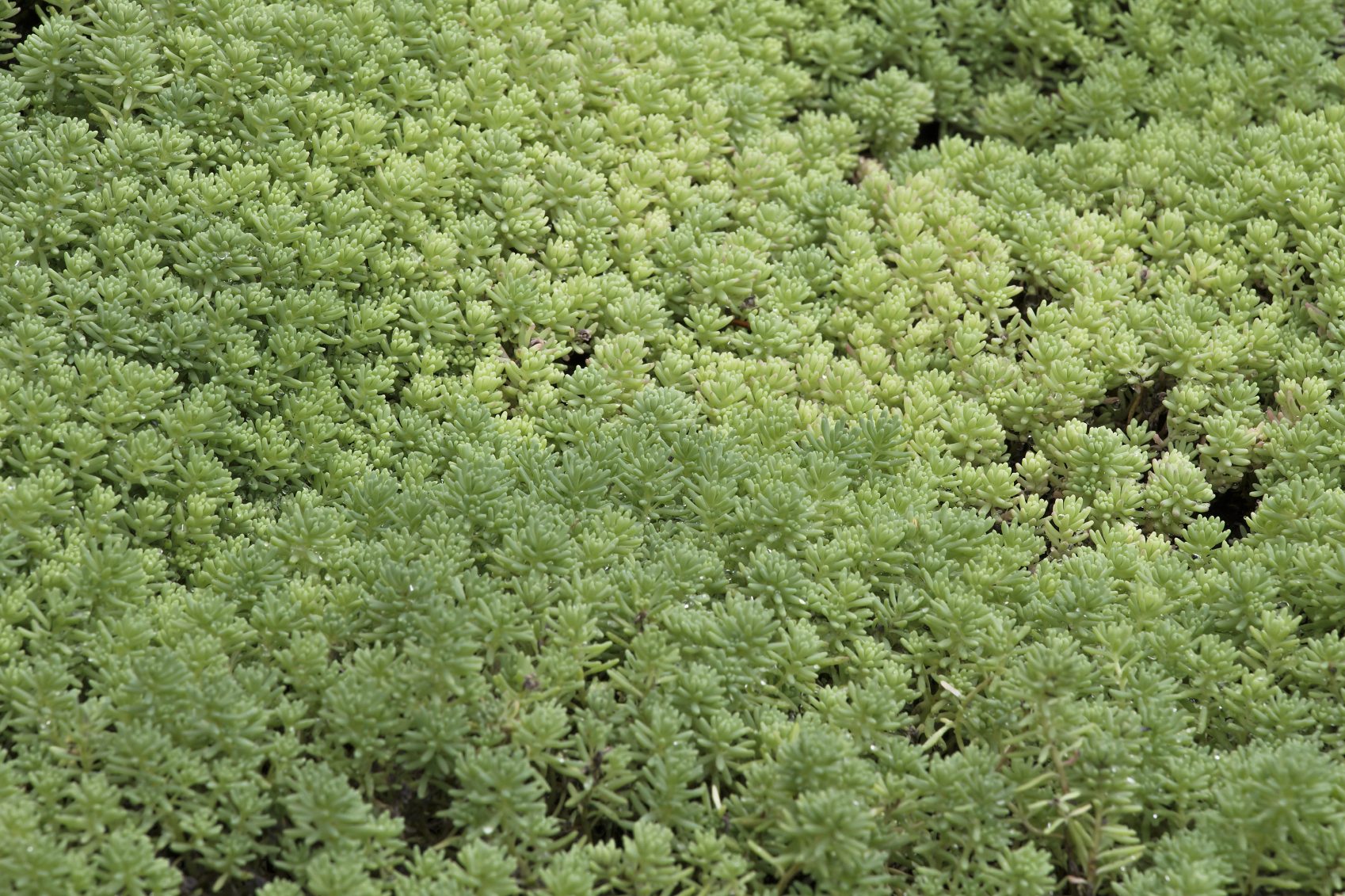Lawn Care For Sedum: How To Grow Sedum In My Lawn


After a season of fertilizing, mowing, raking, thatching, edging, and vetting various problems, the average homeowner may be ready to throw in the towel on traditional turf grass. There are many other easy-care options available. It just depends upon the look and feel you want out of your landscape and the uses to which it is put. Lightly trafficked areas can have sedum as a lawn. It is adaptable, low maintenance, and fast growing.
Pros and Cons of Sedum Lawn Substitute
Sedums are wonderful succulent, drought tolerant plants that grow like weeds and need little babying. The only drawback with growing sedum lawns is its inability to take heavy foot traffic. The leaves and stems are fragile and break off easily, but for lightly used areas it will create a wonderful textured green groundcover. It is true that sedum is a fast growing, no fuss plant with few pest and disease issues and wonderful drought tolerance. In theory, growing sedum lawns would seem like a perfect substitute for traditional nitrogen sucking, high maintenance turf grass. The low-growing varieties of sedum perform very well as groundcover, but in heavy use areas, they suffer a less than pleasing effect. Since the stems break easily, your sedum lawn substitute may end up looking like a war zone, with smashed plants, and stems and leaves hither and thither. Birds and rodents can become a problem in a sedum lawn too. In desert areas, the plants cannot withstand the harsh sun and rely upon a sheltered location to do their best. Overall, sedum is a hardy plant which thrives in poor soil, full sun, and limited moisture.
Lawn Care for Sedum
When changing from turf grass to sedum, preparation of the site is crucial. Remove any existing groundcover or turf grass. Prepare the bed by tilling to a depth of 6 inches (15 cm.) and check that you have good drainage. Incorporate 2 inches (5 cm.) of sand if your soil is clay. Space plants a few inches (8 cm.) away from each other for a quicker establishment. Water the plants weekly for the first month until they have grown a good root mass. Thereafter, lawn care for sedum relies upon plentiful sunshine, occasional weeding, and dry conditions. The worst thing you can do for a sedum patch is to set the sprinkler regularly. Let it dry out thoroughly between irrigations.
Established Sedum in My Lawn
In perfect growing conditions, sedum will take off rapidly and even plugs will root and spread. Any broken pieces also have the tendency to establish in any area the stems fall. This causes the gardener to protest, “There is sedum in my lawn!” This is common when ground covered beds meet sod and injury to the sedum plants transfer living material to the grass. It is a pleasing effect but if it really wrecks your idea of a perfect grassy lawn, simply pull out the offending plants. To prevent this, be cautious when working in your sedum covered beds and make sure you aren't moving plant matter to the turf area.
Gardening tips, videos, info and more delivered right to your inbox!
Sign up for the Gardening Know How newsletter today and receive a free copy of our e-book "How to Grow Delicious Tomatoes".

Bonnie Grant is a professional landscaper with a Certification in Urban Gardening. She has been gardening and writing for 15 years. A former professional chef, she has a passion for edible landscaping.
-
 4 Superfast Composting Methods: Turn Waste Into Garden Gold In 30 Days Or Less
4 Superfast Composting Methods: Turn Waste Into Garden Gold In 30 Days Or LessTry the fastest composting methods to turbocharge your pile and transform kitchen scraps and garden waste into finished compost in just a few weeks.
By Mary Ellen Ellis
-
 Best Spider Plant Soil – Complete Soil Guide And Expert Tips For Keeping Plants Happy
Best Spider Plant Soil – Complete Soil Guide And Expert Tips For Keeping Plants HappySpider plants are fun and easy plants to grow, but what is the best soil for a spider plant? Selecting the right soil is important so they can thrive.
By Bonnie L. Grant